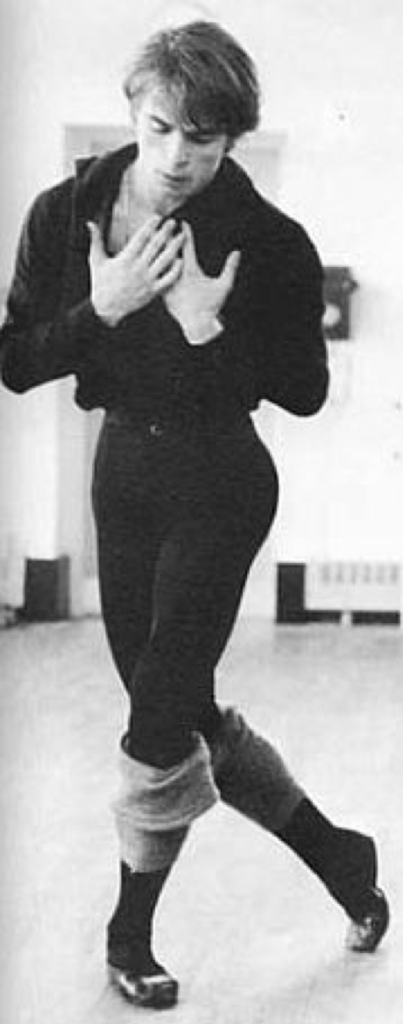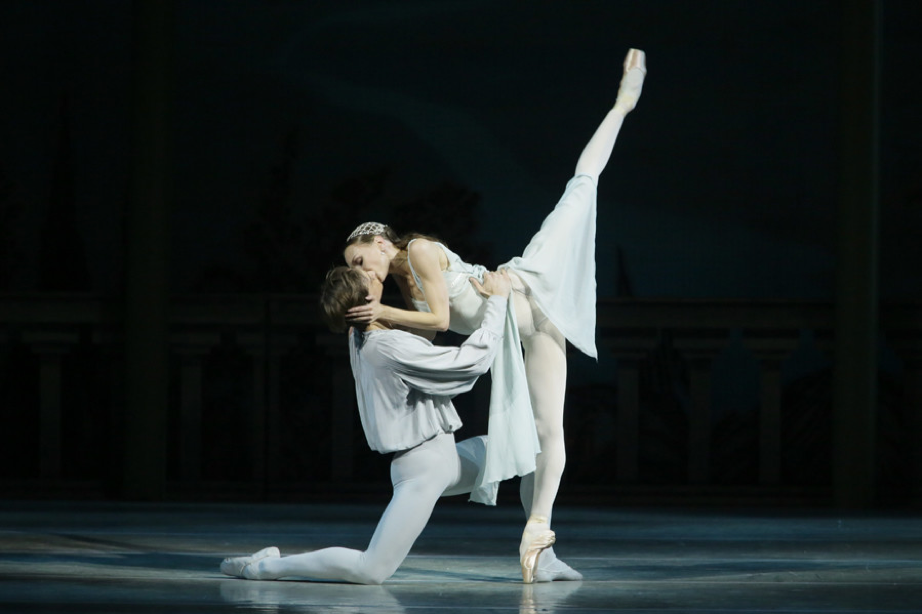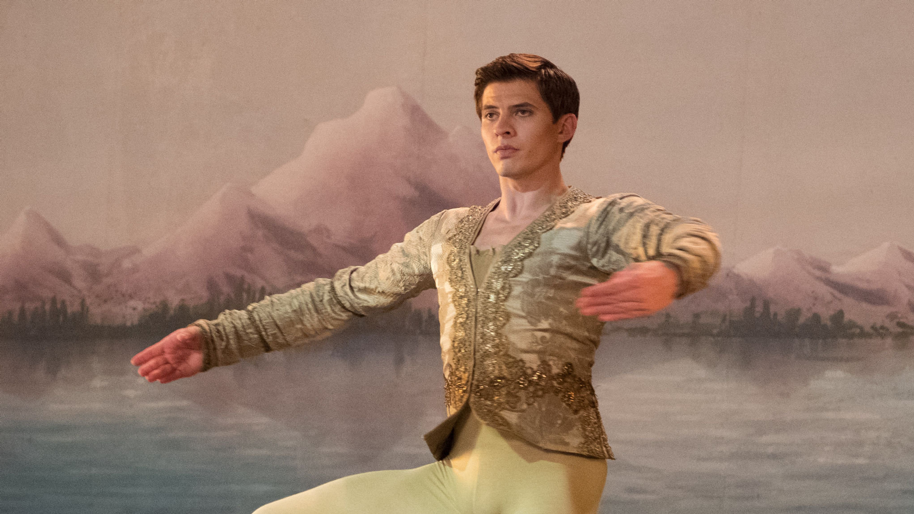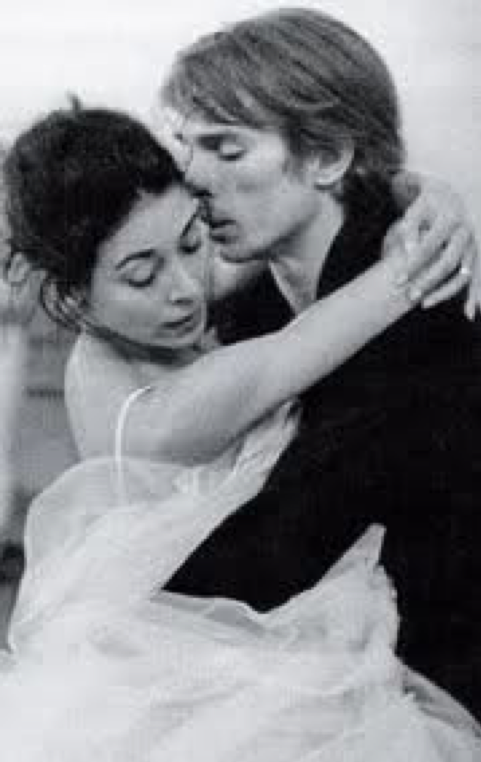
On June 17, 1961 a 23-year-old dancer broke free of his Russian security detail, dashed through the immigration barrier at a Paris airport and asked the French for political asylum. Rudolf Nureyev wasn’t yet famous outside the world of Russian ballet, but in that world he was known as a White Crow – belaya vorona– Russian idiom for a person who is different from his surroundings, who doesn’t ‘fit’ within cultural circles, and goes against the stream.
In 2018, a film entitled The White Crow was released without much fanfare. Written by David Hare (The Reader and The Hours) and directed by Ralph Fiennes, it chronicles Nureyev’s life up to and including his 1961 defection in Paris. It’s a mystery that the film didn’t register with the critics. It’s dramatic, true to its facts, suspenseful, and audiences loved it. Even if you’re not a fan of ballet it’s worth seeing. This is first class drama – both the life and film story.
Just three years after his defection and near the end of her remarkable career, London’s Royal Ballet paired 45-year-old Dame Margot Fonteyn with the explosive 26-year-old Nureyev in what became one of the great ballet partnerships of all time. Interestingly, it was not the first such pairing for Nureyev. At the Kirov in Leningrad, the ballet master paired the newly graduated 21-year-old Nureyev with the company’s 46-year-old prima ballerina, Natalia Dudinskaya, thinking a younger male partner would energize and thereby extend the career of its older star. It worked then and again later with Fonteyn.
It’s rare for ordinary mortals to experience greatness, but three years after his defection I had the opportunity to observe greatness as Nureyev and Dame Margot danced Prokofiev’s Romeo and Juliet in the War Memorial Opera House in San Francisco. I will never forget the feeling I had in their presence.

That night, as Dame Margot emerged en pointe from the wings, stage right, there was an audible gasp, a pause, and then explosive applause from the audience. She WAS the 13-year-old Juliet, and she held that audience in her thrall for the next two hours. Moments after her dramatic entrance Nureyev appeared, and the stage was set for Shakespeare’s star-crossed lovers to dance their destinies to Prokofiev’s beautiful score.
In The White Crow, Nureyev is played by Oleg Ivenko, a talented young Russian dancer who not only looks like Nureyev but dances with the same swagger. Nureyev was a larger than life character. I had trouble imagining any actor or dancer playing the role, but in The White Crow Ivenko disappears almost immediately and Nureyev is on the screen front and center.

The film begins with his birth on the Trans-Siberian Railway enroute to Vladivostok and ends with a tense scene between Russian security guards and French immigration officials at Le Bourget Airport in 1961.
His Tatar-Muslim parents were poor and the father, a minor government official, was abusive and mostly absent, but when Rudik was six years old a ticket changed his life. His mother had one ticket to a ballet performance in Ufa, the Siberian town where they lived, and she was somehow able to smuggle Rudy and his three sisters into the theater. Afterwards, he said “There was simply from this quite early age the awareness that the only thing I wanted was to dance.”
His dance life began with folk dancing but his talent was so prodigious that he was handed from one teacher to another until at 17 he was selected by both the Bolshoi in Moscow and the Kirov in Leningrad for further training. To everyone’s surprise he chooses the Kirov, and this is where the film really begins…with his training under Alexander Pushkin.
Pushkin, the ballet master not the poet, is played by Ralph Fiennes who also directed and produced the film. I’ve always admired him as an actor. The English Patient is one of my all-time favorite films, but here, rather than a badly burned adventurer/spy, he plays Pushkin, the very placid, understated ballet master. Pushkin was not a frightening taskmaster like Diaghilev or a dominating personality like Balanchine. Rather, he was a quiet perfectionist and Nureyev his obsessively driven protege. Their relationship is complicated when Pushkin’s wife, a former ballerina, seduces Nureyev, but the seduction, like Fiennes character, is understated and some biographers have even suggested that Pushkin simply chose to ignore it.
Many of the actors in The White Crow are Russian, and so is much of the dialogue (with English subtitiles). Fiennes speaks it fluently and impressively. The film ends where most of us became aware of Rudolf Nureyev, with his dramatic escape to the West. It touches on his bisexuality but doesn’t dwell there. The White Crow honors his genius, individuality, courage, and lust for life. It’s such a shame that he was taken from the world by the AIDS virus at age 54.

































Just saw a film about Fonteyn on Netflix
which segues nicely with this film (which I haven’t seen yet). Check it out.
Was it the interview with her in Panama? We saw several this week on YouTube. I’ll check out the Netflix one.
As usual, a wonderful article. I will try to find The White Criw on my TV!
Jack,
I also saw Fonteyn and Nureyev do Romeo and Juliet on their tour in Atlanta. I still think about…We will look for the film.
Carl
Carl: I think you’ll like it once you stop looking for the real Nureyev, and it helps that it’s the young Nureyev the film is about. After we saw the film we watched a number of documentaries and ballet videos of them individually and together on YouTube. Fabulous.Be well.
Jack
One of your best TJ. I ama regular each season here in ‘lanna. I will look for the flick.